The Ultimate Guide to Choosing the Right Flooring for Your Building
Finding the perfect floor for your building goes beyond aesthetics. It's a crucial decision that impacts functionality, durability, and budget. This guide explores popular flooring options for various spaces in commercial and residential settings, considering key factors of Durability, Aesthetics, and Cost.
 Caption: Photography: Noughts & Crosses | Project: Aromasphere
Caption: Photography: Noughts & Crosses | Project: Aromasphere
Commercial Flooring Solutions:
Consider marble, tiles, or concrete floors in offices and retail areas, where durability and design flexibility are key. They're long-lasting and offer design possibilities through patterns and combinations.
Granite, marble, or large-format tiles are ideal choices for high-traffic areas like malls and hospitals. These natural stones offer durability and a sophisticated look.
Functionality reigns supreme in industrial settings. Epoxy finishes and vinyl floors are popular selections due to their quick installation, budget-friendly nature, and easy maintenance.
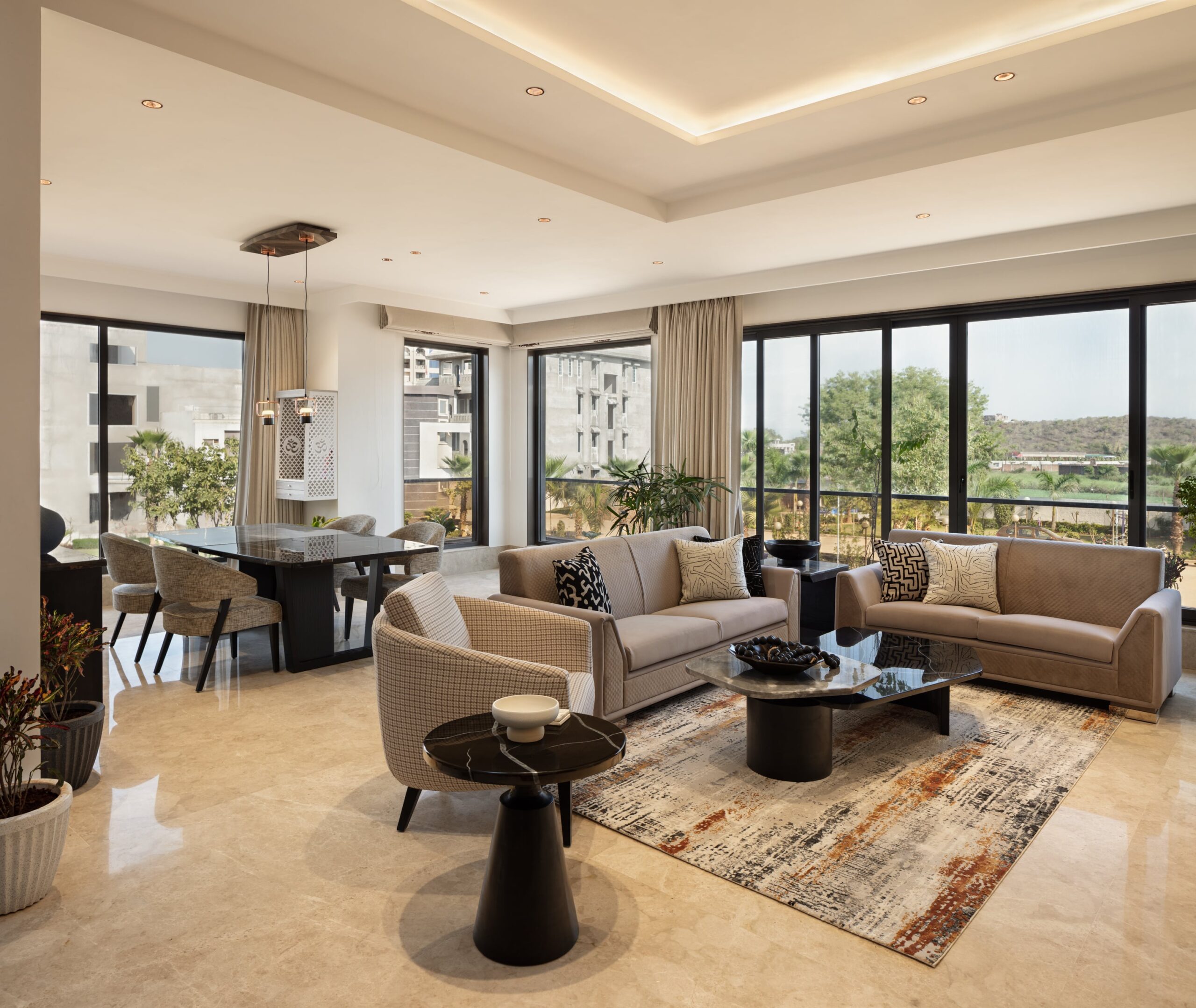
Caption: Photography: Noughts & Crosses | Project: Gwalior House
Residential Flooring Solutions:
- Marble: Marble is popular in residences due to its strength and longevity. However, laying marble in apartments during renovations can be challenging due to the removal of existing flooring and base preparation.
- Tile: Tile is a popular choice for homes because it's durable, water-resistant, and easy to clean. It comes in a wide variety of colours and patterns, so you can find a style that complements your home décor.
- Hardwood: Hardwood flooring adds warmth and beauty to any room. It's a durable choice that can last for decades with proper care. However, hardwood can be susceptible to scratches and dents.
- Engineered Wood: Engineered wood is a more affordable alternative to solid hardwood. It has a real wood veneer over a plywood core, making it more stable and moisture-resistant than solid hardwood.
- Laminate: Laminate flooring is a budget-friendly option that can mimic the look of wood or tile. It's easy to clean and maintain, but it can be scratched and damaged more easily than hardwood or tile.
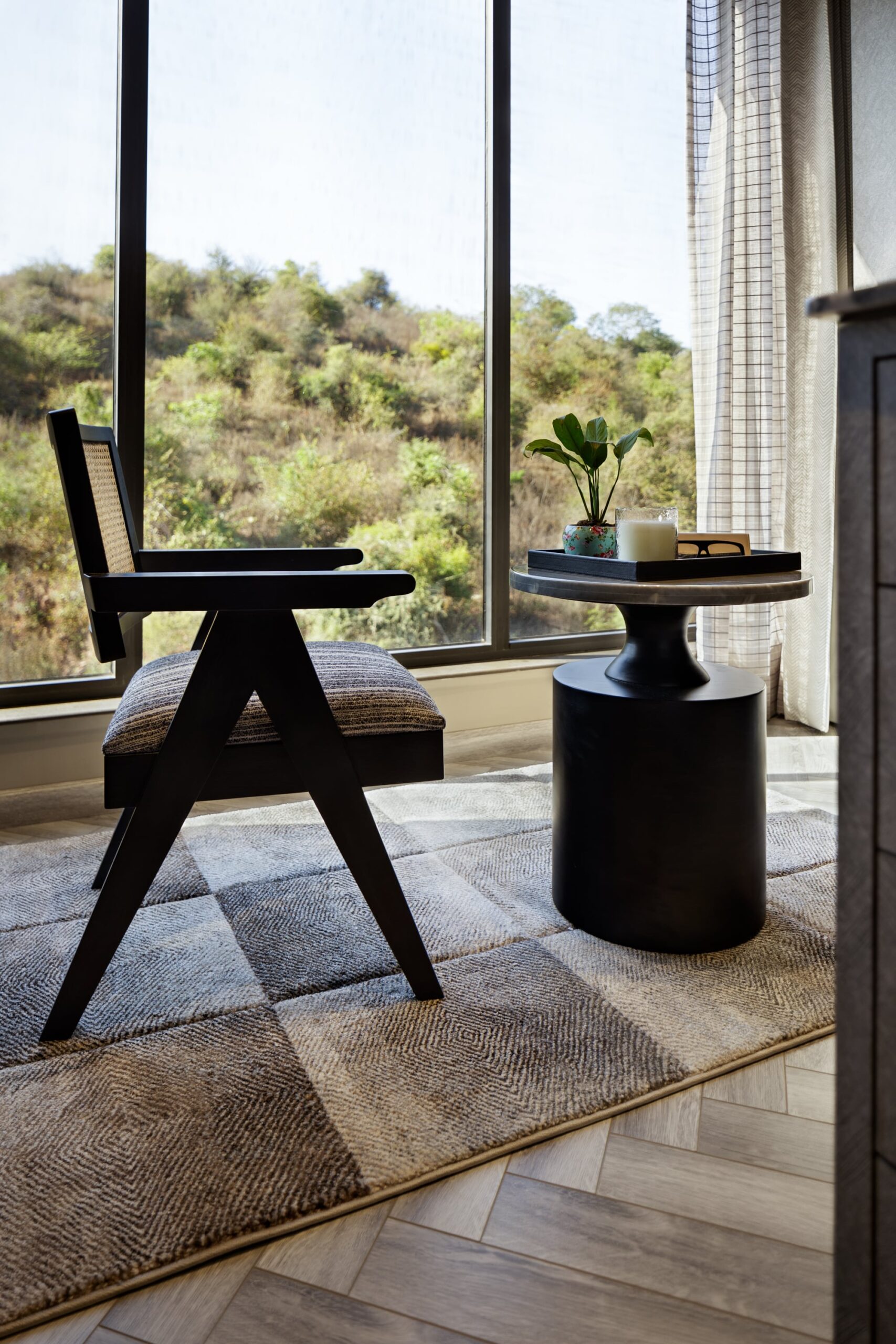
Caption: Photography: Noughts & Crosses | Project: Gwalior House
Adding a Touch of Luxury:
Hardwood or engineered wood flooring can elevate offices or retail spaces. While pricier, they add warmth and richness. Combine wood with marble for an even more luxurious feel, but remember that marble and hardwood require more maintenance.
Cost Considerations:
- Marble: A beautiful and durable choice, but consider the additional cost of polishing and finishing.
- Hardwood Floors: Offer long-lasting beauty but require a higher initial investment.
- Epoxy & Concrete Floors: A cost-effective option depending on thickness and use.
- Terrazzo Tiles: A more affordable alternative to genuine terrazzo flooring with a similar aesthetic.
- Ceramic Tiles: A budget-friendly option with a wide range of styles.
 Photography: Noughts & Crosses | Project: Treetops, New Delhi
Photography: Noughts & Crosses | Project: Treetops, New Delhi



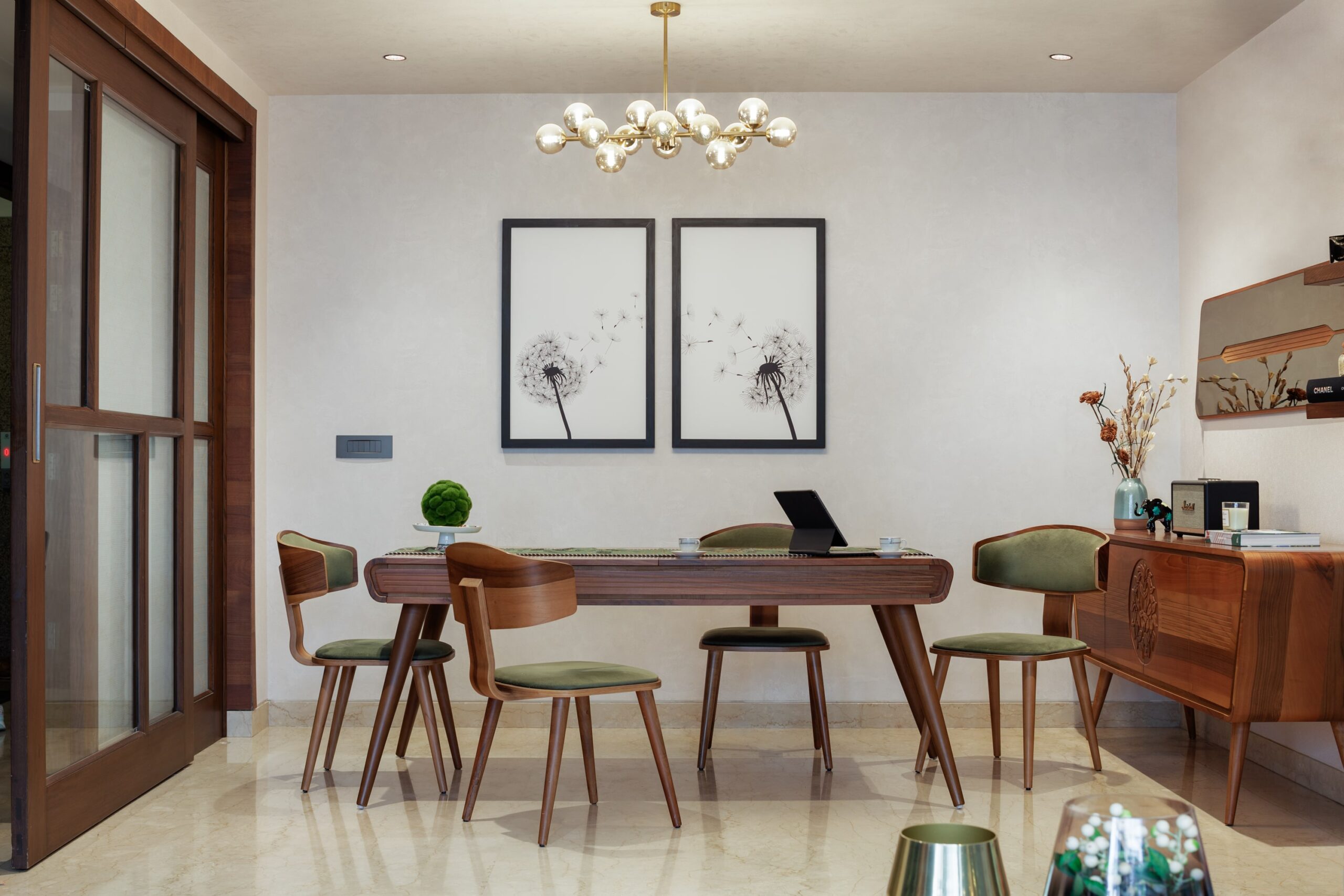
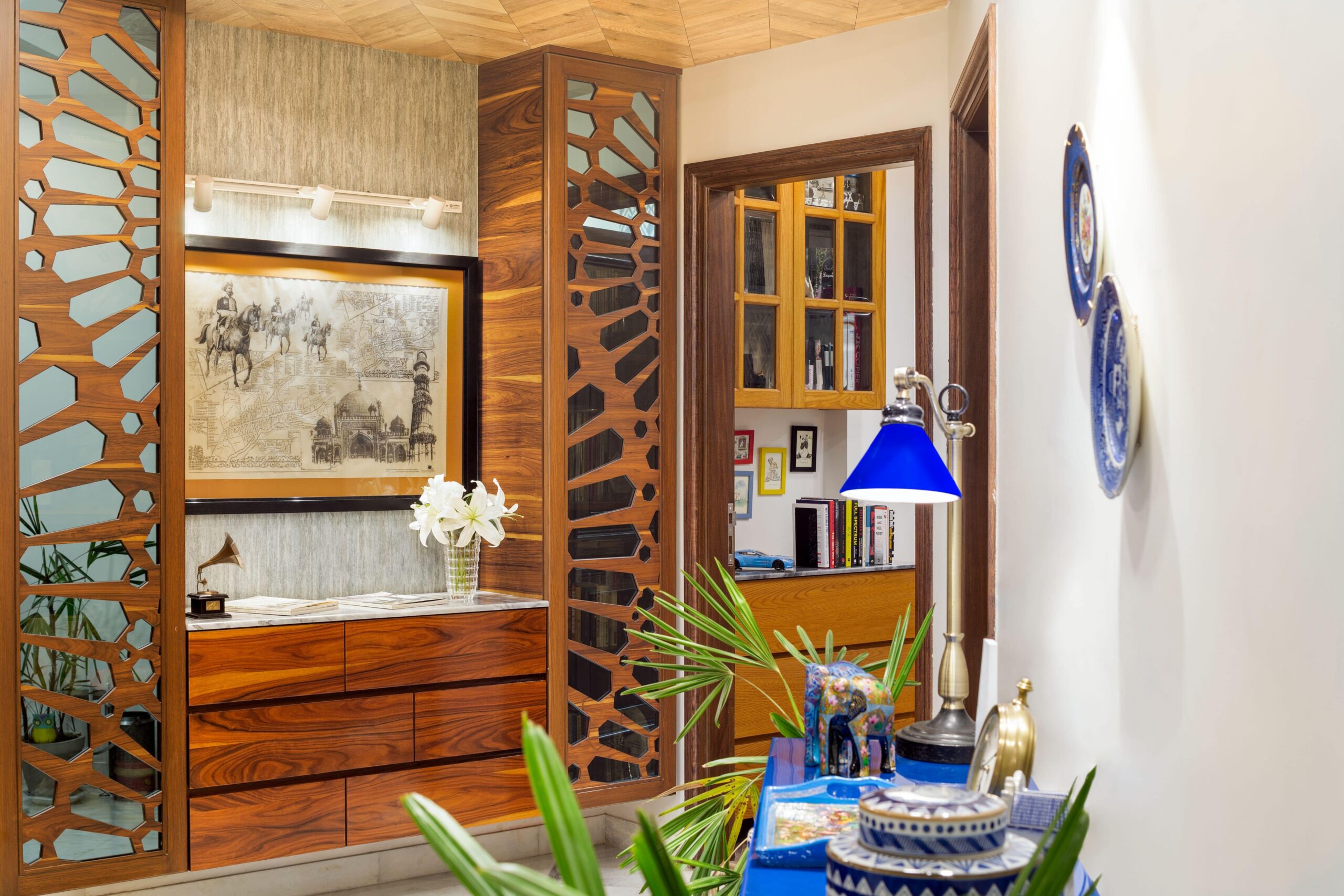
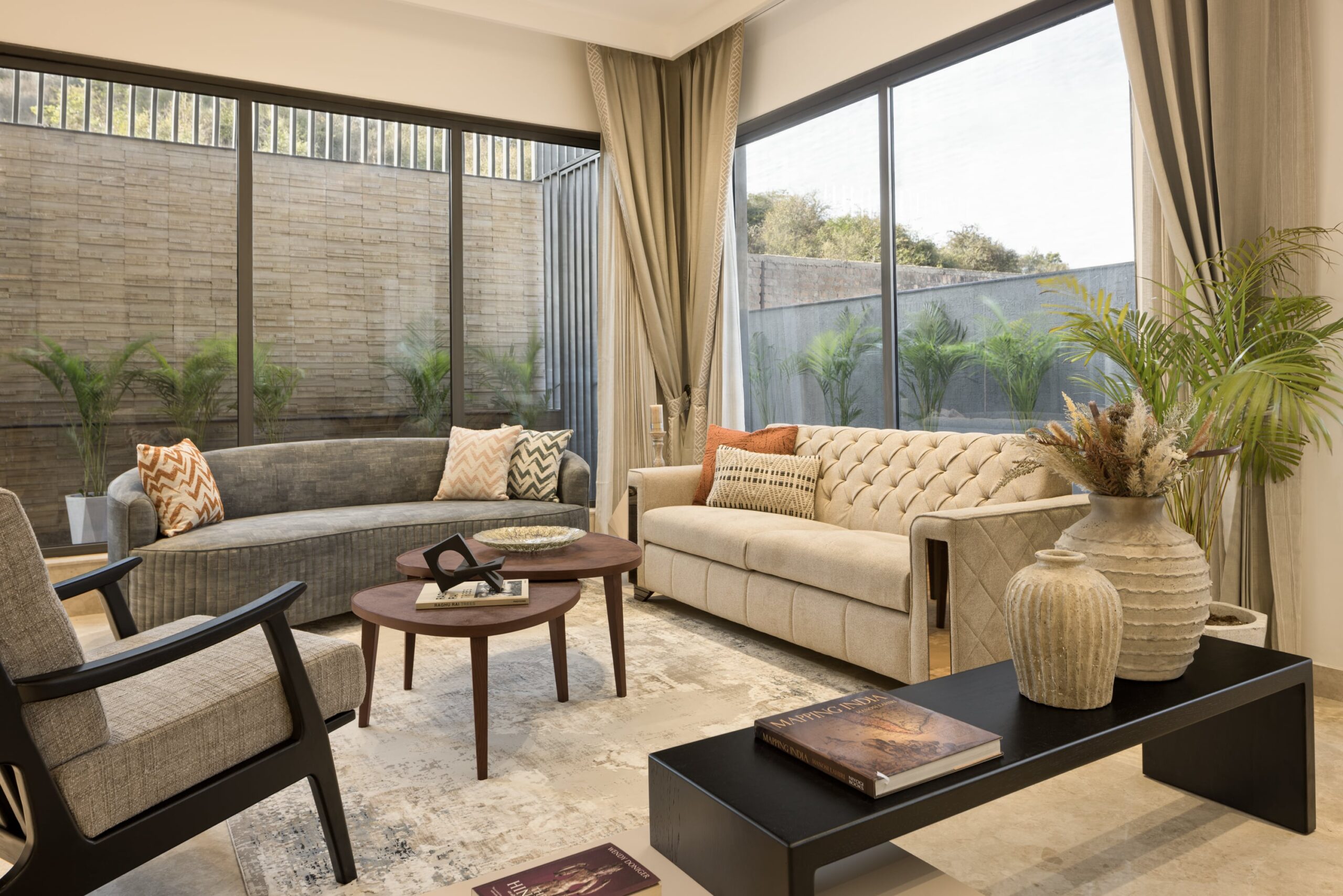
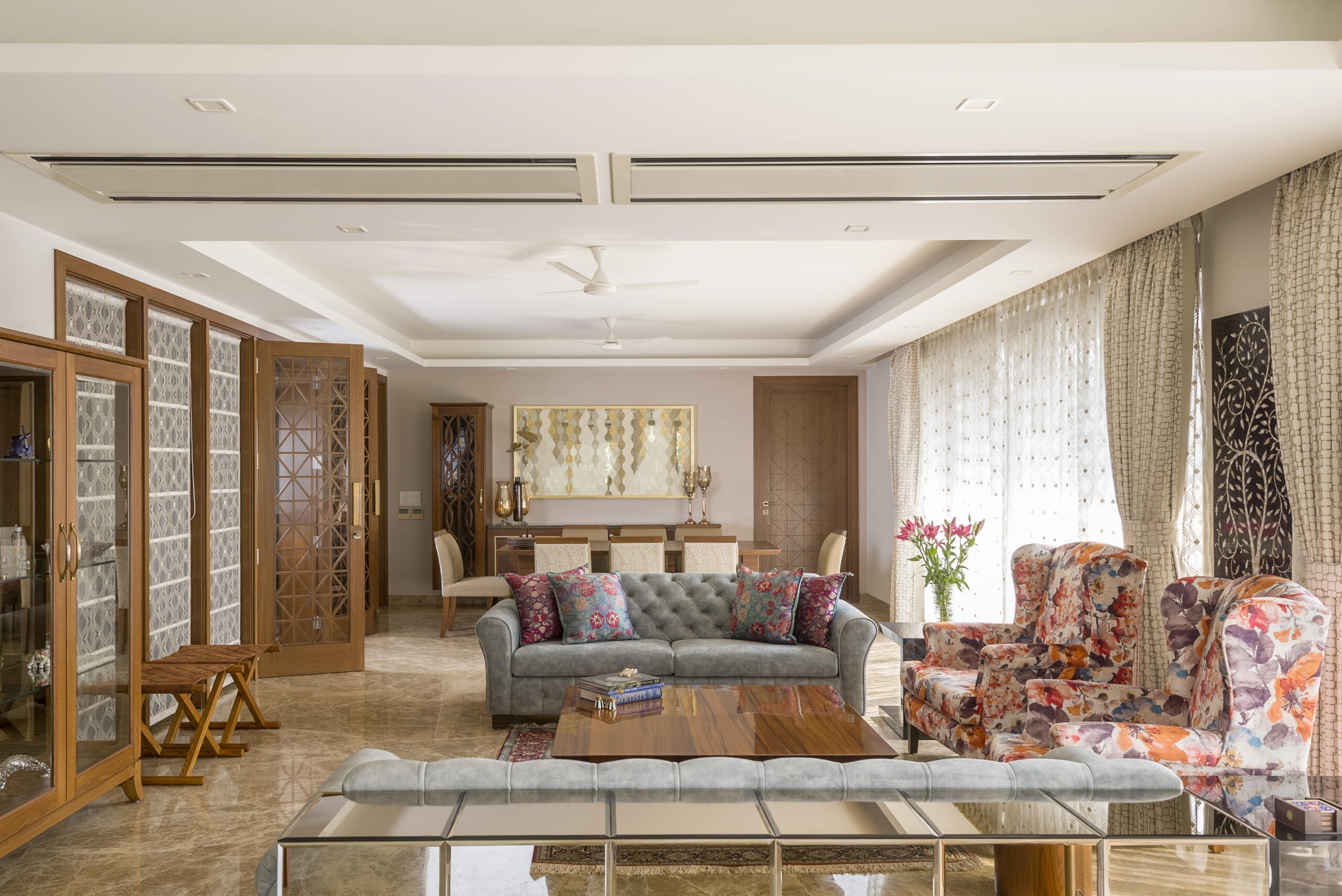

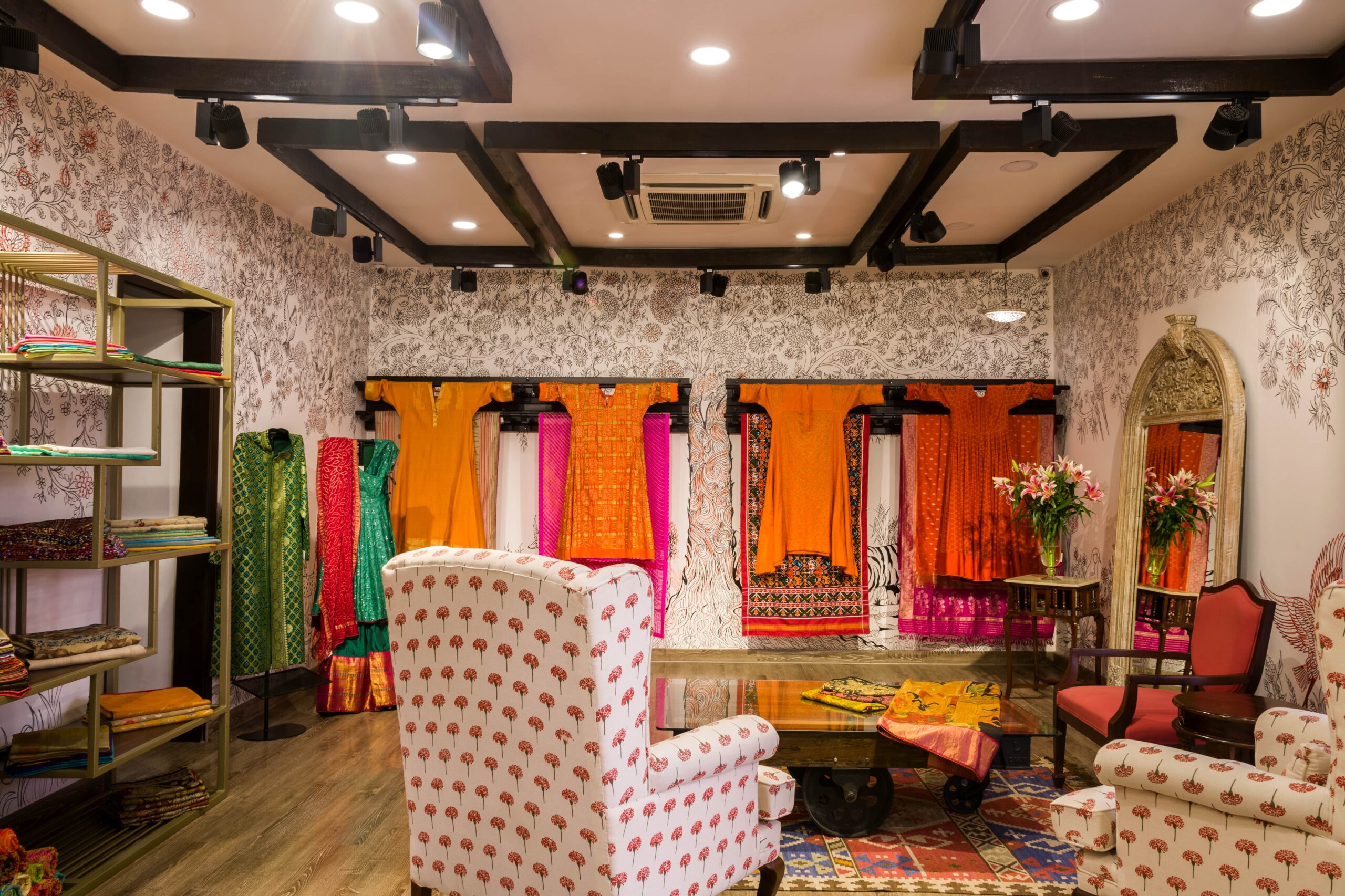
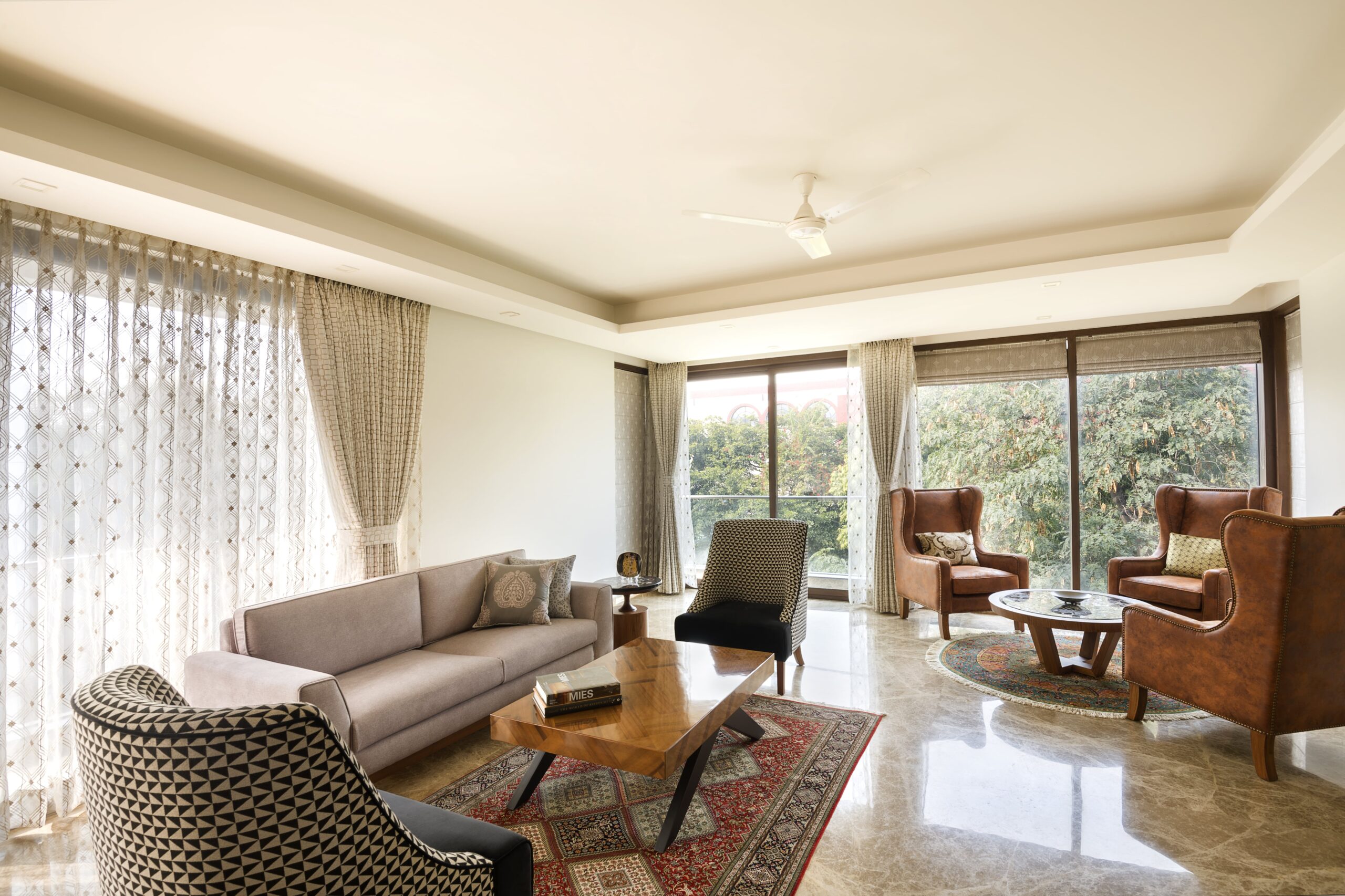
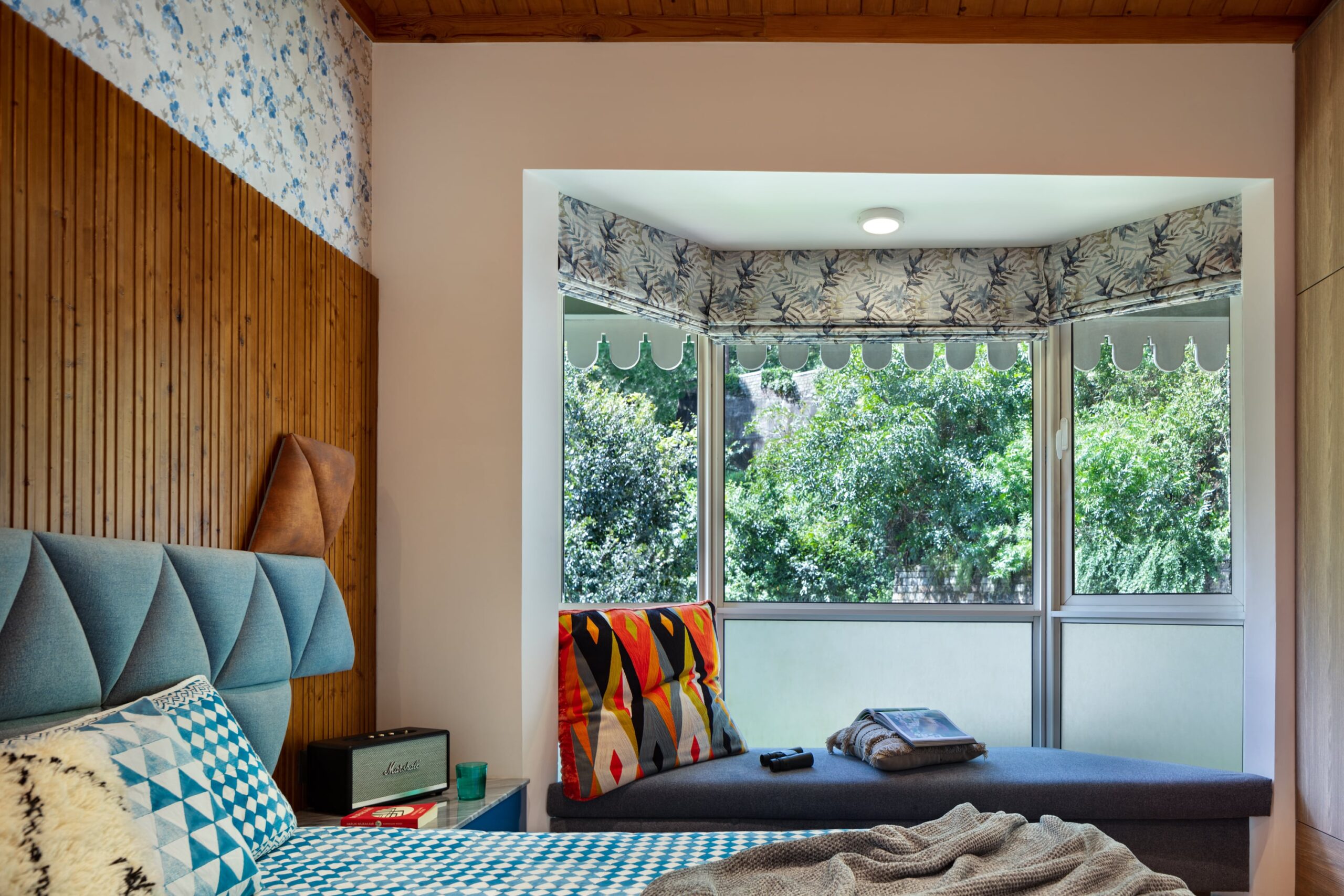
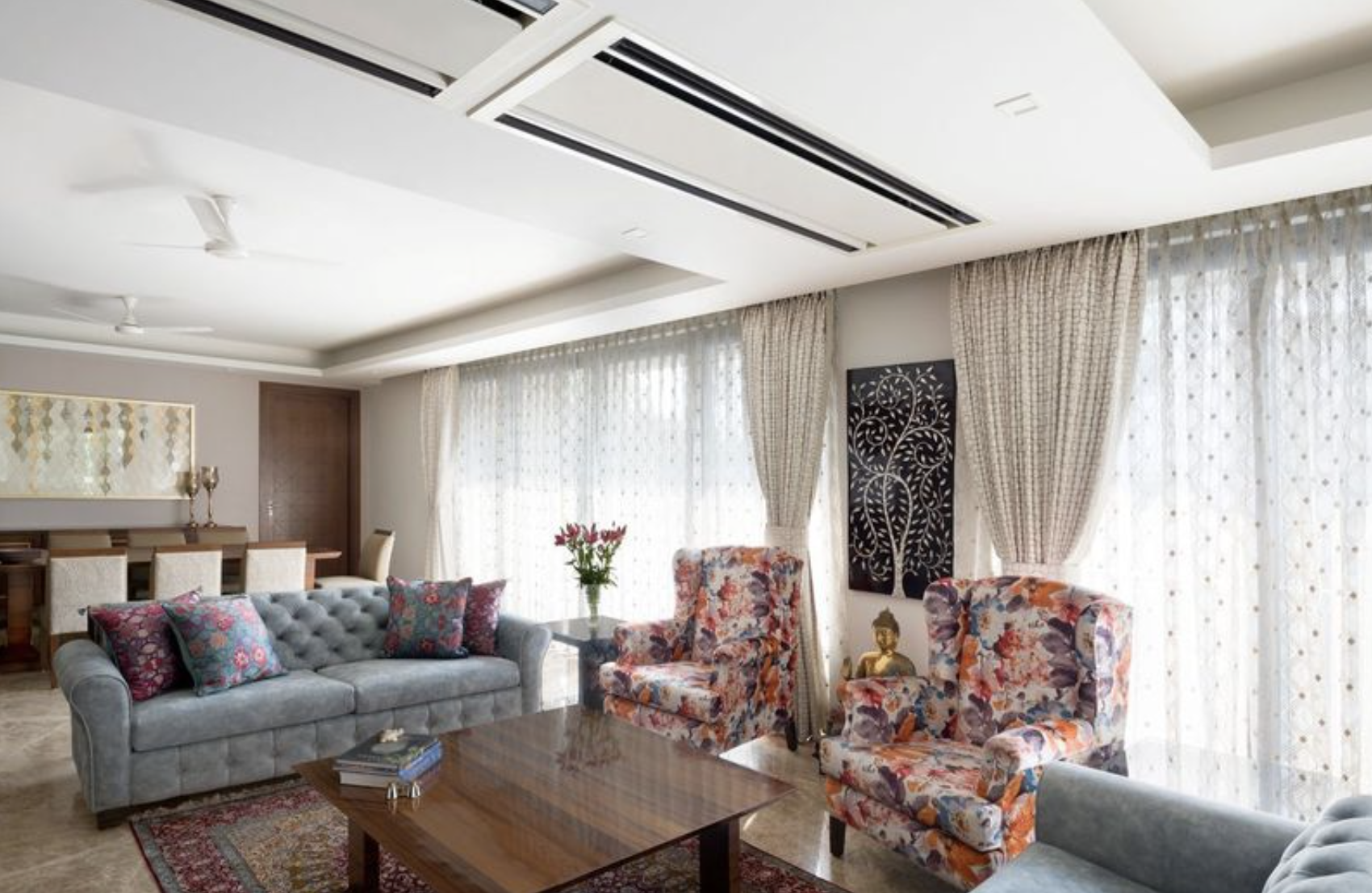

 Using natural materials like wood uniquely in this earthy bedroom from our project, Treetops, New Delhi.
Using natural materials like wood uniquely in this earthy bedroom from our project, Treetops, New Delhi.  Calm, earthy tones used in the Sattva House Formal Living Area exude natural elegance and tranquillity.
Calm, earthy tones used in the Sattva House Formal Living Area exude natural elegance and tranquillity. Combining Indian culture with modern minimalism in the Gaurang Store with balanced use of cultural elements, natural materials and minimalistic furniture.
Combining Indian culture with modern minimalism in the Gaurang Store with balanced use of cultural elements, natural materials and minimalistic furniture.  R-615 Residence showcases personalised pieces on the walls
R-615 Residence showcases personalised pieces on the walls Contrasting dichotomy of colours and textures with the contemporary bar unit in our project, Rue 32, New Delhi.
Contrasting dichotomy of colours and textures with the contemporary bar unit in our project, Rue 32, New Delhi.  The living area of ‘Valley of Dreams’ Kasauli is peppered with memorabilia and art, adding personality and individuality to the space.
The living area of ‘Valley of Dreams’ Kasauli is peppered with memorabilia and art, adding personality and individuality to the space.  Valley Of Dreams in Kasauli accentuates the mesmerizing views of mountains
Valley Of Dreams in Kasauli accentuates the mesmerizing views of mountains  Locally sourced wood for hand-crafted furniture and interior design in the Valley of Dreams in Kasauli, Himachal Pradesh
Locally sourced wood for hand-crafted furniture and interior design in the Valley of Dreams in Kasauli, Himachal Pradesh


